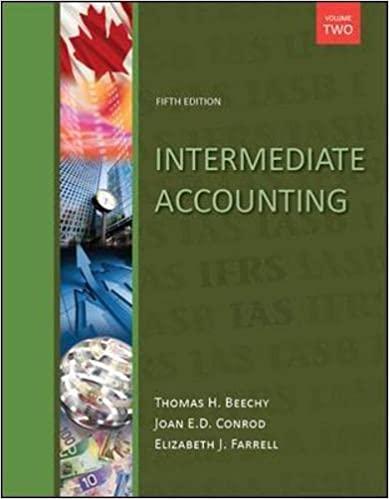Question
Problem 1: Zap, Inc., manufactures and sells a broadleaf herbicide that kills unwanted grasses and weeds. Via their television infomercials, Zap encourages homeowners to take
Problem 1:
Zap, Inc., manufactures and sells a broadleaf herbicide that kills unwanted grasses and weeds. Via their television infomercials, Zap encourages homeowners to "take control of their yards" by purchasing one of their "ZAP" kits. Each ZAP kit includes a 32-ounce bottle of weed and grass killer concentrate and a 16-ounce bottle of poison ivy and tough brush killer concentrate. Anticipating high sales, Zap produced 50,000 ZAP kits at a cost of $7.50 per kit. Unfortunately, Zap overestimated the demand for their product. After a year of infomercials, the company had only sold 25,000 units at a price of $19.95 per unit. The company is in a quandary about what to do with the remaining 25,000 units. Zap could sell the remaining 25,000 units to a national home-improvement store for $7.00 a unit. Alternatively, the company could sell the product via its Web siteunder this option, Zap believes they could sell 60% of the remaining units if they reduced the price to $9.95. (Any remaining units would be thrown away). Finally, Zap has ruled out running additional infomercials due to the high cost of TV advertising.
1a. What is Zap's decision problem, including its goals?
1b. What are Zap's options with respect to the 25,000 unsold ZAP kits?
1c. What is the increase in cash flow associated with each of Zap's options?
1d. What should Zap do with the remaining ZAP kits?
Problem 2:
The following costs relate to a manufacturing organization:
Sales commissions Sales manager salary
Distribution costs Production supervisor
Factory rent Corporate office expenses
Product components Supplies used in manufacturing
Direct manufacturing labor Plant manager salary
Question: Classify the costs as product costs or period costs. Also classify the costs as variable or fixed with respect to the volume of production. What inferences do you draw about the correspondence between the two concepts?
Problem 3:
Ajay Singh plans to offer gift-wrapping services at the local mall during the month of December. Ajay will wrap each package, regardless of size, in the customer's choice of wrapping paper and bow for a price of $3. Ajay estimates that his variable costs will total $1 per package wrapped and that his fixed costs will total $600 for the month.
3a. Express Ajay's profit before taxes in terms of the number of packages sold.
3b. How many packages does Ajay need to wrap to break even?
3c. How many packages must Ajay wrap to earn a profit of $1,400?
Problem 4:
Mountain Maples is a mail-order nursery dedicated to growing, selling, and shipping beautiful Japanese Maple trees. Located on a ridge-top in Mendocino County, northern California, Mountain Maples offers two distinctive types of Japanese Maples: Butterfly and Moonfire. The trees are sold after five growing seasons, and revenue and cost data for each tree type (for the most recent year) are as follows:
Butterfly Moonfire
Quantity sold 800 1,600
Selling price per tree $200 $100
Variable cost per tree $100 $50
Mountain Maples' fixed costs for the most recent year were $75,000.
4a. How many Japanese Maples must Mountain Maples sell in a year to break even? At this sales volume, how many Butterfly and Moonfire trees are sold?
4b. At the current product mix, how many Butterfly trees must Mountain Maples sell in a year to earn a profit of $50,000?
4c. Assume that Mountain Maples product mix changes to 50% Butterfly and 50% Moonfire. How does this information change your answer to part (a)?
Problem 5:
David Young, a theater owner wants to secure the rights to exhibit the movie "Star Wars XIII". He has already decided to offer a 90%, 70%, and 50% sliding scale over the three week period (Theater owners pay a % of box office to the distributor). The weekly fixed "house expenses" for rent, climate control, personnel, and advertising, and other items are $5,000. Allowing for lower prices for children, senior citizens and matinees, the average price per ticket is $6.
Young expects to sell 8,000 tickets during first week, 6,000 tickets during the second, and 4,000 during the third.
For the purpose of this problem, ignore the concession operations which normally adds a significant amount to theater's profits.
5a. What is the expected operating income for the three week run?
5b. Find the breakeven volume as the volume where contribution margin equals the fixed cost.
Step by Step Solution
There are 3 Steps involved in it
Step: 1

Get Instant Access to Expert-Tailored Solutions
See step-by-step solutions with expert insights and AI powered tools for academic success
Step: 2

Step: 3

Ace Your Homework with AI
Get the answers you need in no time with our AI-driven, step-by-step assistance
Get Started


